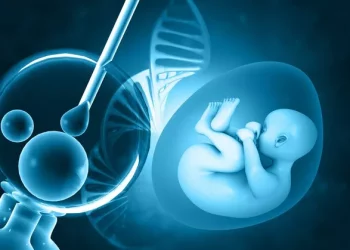Infertility, defined as the inability to conceive after one year of regular, unprotected intercourse, affects millions of couples worldwide. Its impact extends beyond the physical realm, often causing emotional and psychological distress for those involved. Despite being a shared challenge for many couples, a prevalent misconception persists: infertility is often seen as primarily or solely a female issue. This misconception can lead to stigmatization and a lack of comprehensive diagnostic and treatment approaches, ignoring the significant role that male infertility can play.
Distribution of Infertility Causes
Infertility is a multifaceted issue that can arise from various causes, attributable to either or both partners. According to the National Institutes of Health (NIH), approximately one-third of infertility cases are due to male factors, another one-third to female factors, and the remaining third result from a combination of both or unexplained causes.
Male Infertility Factors
Male infertility can stem from several underlying issues, including:
Sperm Production Problems: Azoospermia (complete lack of sperm) and oligospermia (low sperm count) are significant contributors to male infertility. These conditions can result from genetic factors, hormonal imbalances, infections, or varicoceles (enlarged veins in the scrotum).
Sperm Function Problems: Even if sperm count is normal, issues such as poor motility (movement) or abnormal morphology (shape) can impede the sperm‘s ability to reach and fertilize the egg.
Ejaculatory Issues: Conditions like retrograde ejaculation (where semen enters the bladder instead of exiting through the penis) can prevent sperm from being deposited in the female reproductive tract.
Hormonal Disorders: Disorders affecting hormones such as testosterone, luteinizing hormone (LH), and follicle-stimulating hormone (FSH) can disrupt sperm production and function.
Genetic Disorders: Conditions such as Klinefelter syndrome or Y chromosome microdeletions can impact sperm production and lead to infertility.
See also: Autism and Infertility
Female Infertility Factors
Female infertility can also arise from a variety of factors, including:
Ovulation Disorders: Issues such as polycystic ovary syndrome (PCOS), hypothalamic dysfunction, and premature ovarian failure can disrupt the release of eggs from the ovaries.
Tubal Factors: Blocked or damaged fallopian tubes, often due to pelvic inflammatory disease (PID) or endometriosis, can prevent sperm from reaching the egg or hinder the egg’s journey to the uterus.
Uterine or Cervical Issues: Conditions like uterine fibroids, polyps, or congenital abnormalities can interfere with implantation or the ability to carry a pregnancy to term.
Endometriosis: This condition, where tissue similar to the lining of the uterus grows outside the uterus, can cause inflammation and scarring, impacting fertility.
Hormonal Imbalances: Imbalances in hormones like estrogen and progesterone can affect ovulation and the overall menstrual cycle, complicating conception efforts.
Combined and Unexplained Infertility
In many cases, infertility is not attributable to a single factor but rather a combination of issues from both partners. Additionally, a significant portion of infertility cases remain unexplained despite thorough evaluations, highlighting the complexity of human reproduction and the limitations of current diagnostic tools.
Addressing the Myth
The misconception that infertility is solely or primarily a female issue is deeply rooted in historical views on reproduction. Traditionally, the burden of childbearing and the ability to conceive were viewed as predominantly female responsibilities. This perspective overshadowed the recognition of male infertility and its impact on conception.
Historical Perspectives on Reproduction
Throughout history, reproductive challenges were often seen through a gendered lens, with women bearing the brunt of societal pressure and blame. This view was perpetuated by limited scientific understanding and the patriarchal structures that dominated many societies. As medical science advanced, the focus on female reproductive health remained more pronounced, while male infertility received comparatively less attention.
See also: Autoimmune Disease and Infertility
Recognizing Male Infertility
Acknowledging male infertility as a significant factor is crucial for several reasons:
Accurate Diagnosis and Treatment: Understanding that infertility can stem from either partner ensures that both are evaluated and treated appropriately. This comprehensive approach increases the likelihood of identifying the underlying cause and selecting effective treatments.
Reducing Stigma: Recognizing male infertility can help reduce the stigma and emotional burden often placed on women. It promotes a more balanced view of reproductive health and encourages shared responsibility between partners.
Improving Outcomes: Addressing both male and female factors can improve the chances of successful conception, as interventions can be tailored to address the specific issues identified in each partner.
Conclusion
Infertility is a complex issue that can arise from factors affecting either partner. It is essential to dispel the myth that infertility is primarily a female problem and recognize the significant role that male infertility can play. Couples experiencing fertility issues should seek professional evaluation for both partners to ensure a comprehensive understanding of their reproductive health.
Resources are available for couples struggling with infertility, including fertility clinics, support groups, and counseling services. Seeking professional help can provide guidance, support, and a pathway toward achieving the goal of conception. By addressing infertility as a shared challenge, couples can navigate this difficult journey with greater understanding and hope.
Related Topics:
What is the Best Month to Conceive: A Quick Guide
The Best and Suitable Fertility Testing: What You Need To Know



























